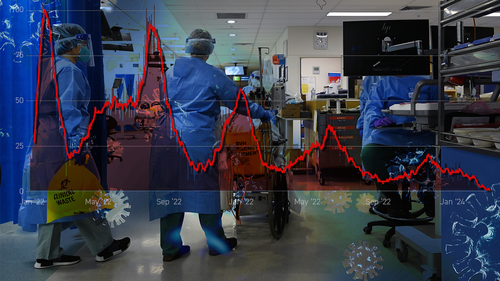The Department of Health and Aged Care’s rolling seven-day average showed the number of deaths fell to zero briefly in March.
Hospital admissions are also at their lowest since January 2022.

While this was hailed as a “milestone”, some experts were sceptical.
“While this is encouraging data, it’s almost certainly not correct that there were zero COVID deaths in that week,” infectious disease modeller Associate Professor James Wood, from the University of New South Wales, said.
“Instead, our near real-time reporting system for reporting of deaths has mostly wound down and we now need to rely on the slower ABS reporting which tends to occur at about a two-month delay.”

The latest COVID-19 strain spreading across the world
Wood also estimated infections were still high, previously saying 20 to 25 per cent of Australians had caught the virus in the most recent wave.
“Clearly, we are in a trough after the wave caused by the subvariant JN.1 at the end of last year,” University of South Australia chair of biostatistics Professor Adrian Esterman said.
“However, that trough is still at a fairly high level, with over 22,000 confirmed cases so far in March, and presumably many times that number of actual cases.”

Esterman said Australia may be in its best position since the beginning of the pandemic, but warned against complacency.
“Last month there were over 250 active COVID-19 outbreaks in residential aged care homes, and only 36 per cent of Australians aged 75 and over have had a booster shot within the last six months,” he said.
“We see very little messaging from any of our governments encouraging elderly people to get vaccinated. This is not good enough. We should at the very least still be doing all we can to protect our vulnerable population.”
However, other experts were more welcoming of the data, while still emphasising that COVID-19 would continue to circulate and mutate.
“The fact that the weekly number of deaths from COVID-19 fell to zero for the first time since pretty much the beginning of the pandemic does seem like a significant milestone worth acknowledging,” Deakin University Associated Professor in epidemiology Hassan Vally said.
“It serves as a clear indicator of where we are now when it comes to this disease that turned our lives upside down, and it highlights how much the overall threat that COVID-19 poses to us as a population has fallen since the beginning of the pandemic.”
Experts attributed the mortality landmark to a combination of high vaccination, immunity from prior infection, and an improved understanding both of the virus and effective treatments.






